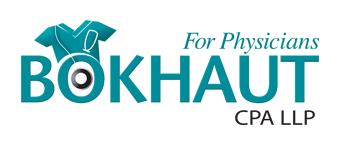Are you a physician that moved to Canada in the last year? If so, these are some things that you should know about...
11 Reasons Why Physicians Contribute to RESPs
You May Also Like…
As veterans of higher education, physicians often anticipate that their children will carry the torch of post-secondary learning. Physicians can optimize savings and tax on this future expenditure by contributing to a Registered Education Savings Plan (RESP), which has a multitude of advantages. An RESP is a government-assisted savings vehicle designed to help Canadians save for their children’s post-secondary education.
1. Tax-Deferred Growth: While contributions to an RESP are made with after-tax money, the growth of your investments within the plan is tax-deferred. This means you won’t be taxed on the earnings if they remain within the RESP. When the funds are withdrawn for educational purposes, accumulated investment income is taxed in the child’s hands (typically at a low tax rate), rather than the doctor’s hands (typically high rate), resulting in tax savings.
2. Government Grants: The Canadian government incentivizes RESP contributions through the Canada Education Savings Grant (CESG) program, where they will match a portion of the annual contributions. The grant that is provided is scaled based on family income. As a result, physicians are generally eligible for a maximum grant of $500/year (20% of the annual contributions, up to $2,500). The grant, therefore, provides a guaranteed return on investment of 20% up to $2,500/year.
3. Income Smoothing: For incorporated physicians, drawing annual funds from their corporation to be invested in an RESP can assist with income smoothing and tax reduction. If the doctor is not in the highest personal tax bracket, drawing out funds on an annual basis, rather than large lump sums as the funds are required, can allow the funds to be extracted at lower tax brackets.
4. Mitigating Education Costs: The costs of higher education are continually rising. By contributing to an RESP, doctors build a financial cushion that can help alleviate the burden of tuition fees, textbooks, housing, and other educational expenses for their children.
5. Flexibility in Beneficiaries: If the intended beneficiary doesn’t pursue post-secondary education, the RESP plans offer flexibility, allowing the contributor to transfer the funds to another eligible family member without forfeiting government grants or investment gains
6. Investment Opportunities: Within the RESP, doctors can invest the contributed funds in various investment options like mutual funds, stocks, bonds, and GICs. This opens the door to potential growth through compounding over time, which can significantly enhance your child’s education savings.
7. Fostering Financial Discipline: Consistently contributing to an RESP instills valuable financial discipline and nurtures long-term saving habits. It provides a structured approach to set aside funds dedicated to future education.
8. Family and Friends Contributions: An RESP is not solely funded by parents or guardians. Family members and friends can also contribute, making it a wonderful way for others to contribute to a child’s education fund during special occasions, further boosting the education savings.
9. Avoiding Student Loan Debt: By saving for education ahead of time, physicians help their children avoid or minimize the burden of student loans. This can empower them with a solid financial foundation as they embark on their post-secondary education journey and subsequent careers.
10. Peace of Mind: The knowledge that there’s a dedicated fund for education purposes can provide both the doctor and their children with peace of mind. This assurance minimizes stress and uncertainty when the time comes to cover higher education expenses.
11. Lifetime Contribution Limit: While there is a lifetime contribution limit for each beneficiary, there is no annual ceiling on RESP contributions. This provides the flexibility to catch up on contributions if you haven’t been able to contribute as much in previous years.
Contributing to an RESP is a strategic financial decision that offers a plethora of benefits to physicians, from tax advantages and government grants to investment opportunities and peace of mind. It is essential to familiarize yourself with the rules and regulations governing RESPs and tailor your contributions to your unique circumstances and aspirations.
* This article was prepared on September 7, 2023. Content is for informational purposes only and is not intended to be used as professional advice. Each taxpayer’s circumstances are unique. Bokhaut CPA makes no representation as to the accuracy and completeness of the information in this article and will not be liable for any errors or omissions in this information.
You May Also Like…
Fall Economic Update 2022 – A 5 Minute Summary of the Relevant Provisions for Physicians
Overall Analysis: New details were scarce in the 2022 Fall Economic Statement; for the most part, the Honorable Chrystia Freeland provided more detail on the 2022 Budget Proposals. In summary, the provisions most relevant for physicians were as follows: PROPOSAL:...
Moving Expenses: When are they deductible for physicians?
Are you a physician who moved in 2022, or are considering a move in 2023? If so, your moving expenses may be deductible for tax purposes. Are you eligible to claim moving expenses? To claim moving expenses, you must meet the following criteria outlined by CRA: One...
First Home Savings Account (FHSA) – Newly Announced Updates to the Program
This article has been updated for the draft legislation proposals from the Department of Finance ‘Design of the Tax-Free First Home Savings Account’ Backgrounder, released August 9, 2022.. On April 7, 2022, the Federal Government released a budget with two new...
The Self-Employed Physician
How to Organize Yourself for Personal Tax Filing Step 1: Be Aware of Your Income & Expenses As a self-employed physician, fee-for-service income can come from a variety of sources, including various health authorities (WRHA, NRHA, IERHA, etc.),...
4 Common Tax Questions from Manitoba Resident Physicians
The most frequent questions we receive from resident physicians relate to their ability to claim various tax credits and deductions. This is often complicated by their participation in various assistance or rebate programs and the continuing cost of their medical...







